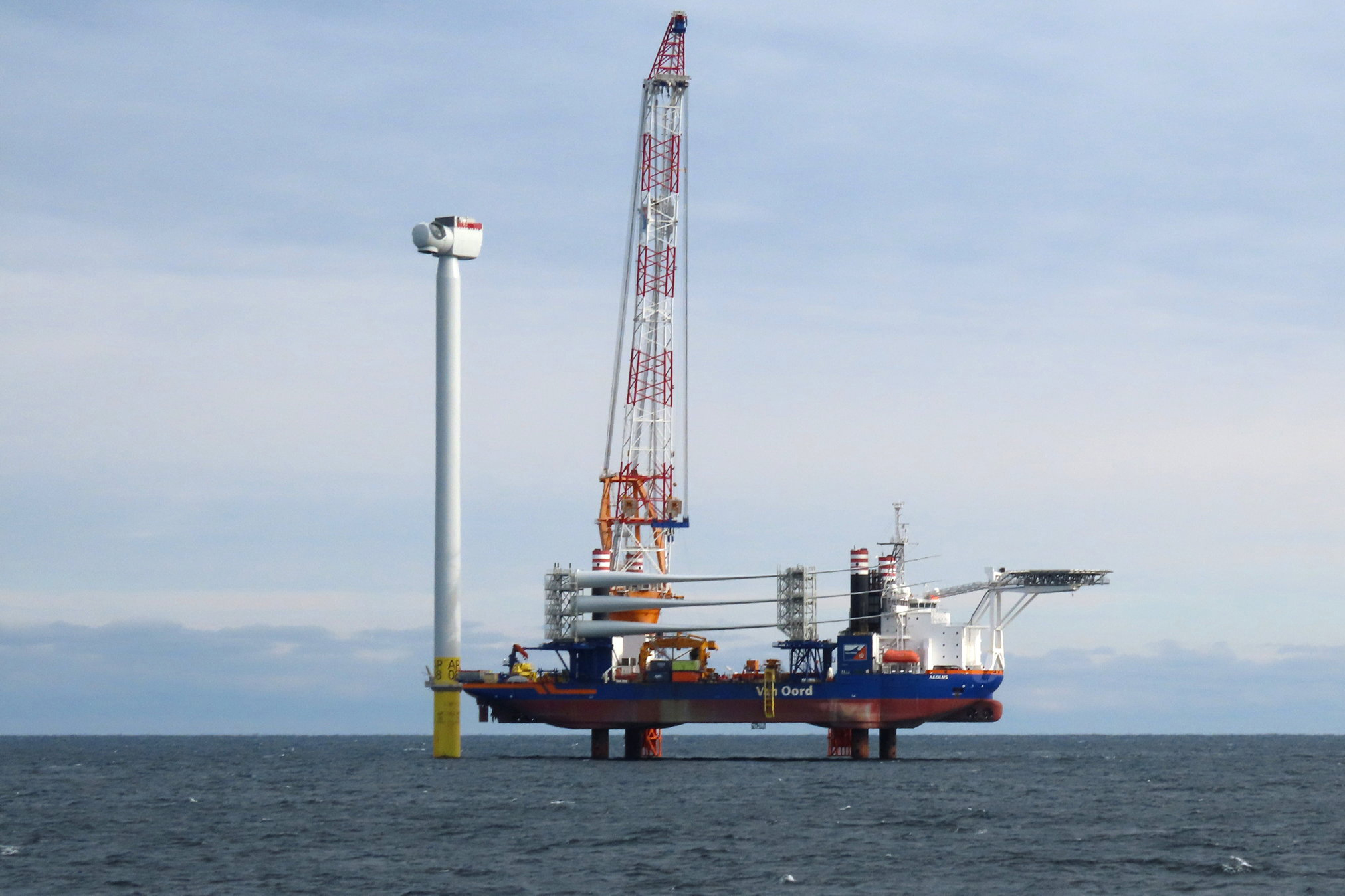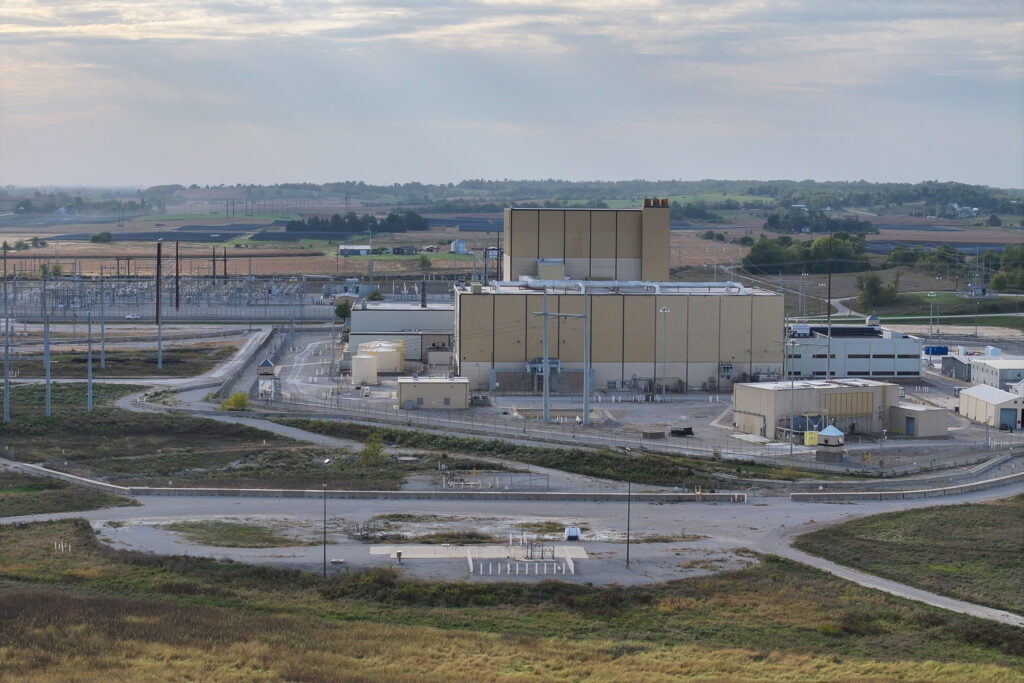As President Donald Trump signed a slew of executive orders Tuesday aimed at keeping coal power alive in the United States, he repeatedly blamed his predecessor, Democrats and environmental regulations for the industry’s dramatic contraction over the past two decades.
But across the country, state and local officials and electric grid operators have been confronting a factor in coal’s demise that is not easily addressed with the stroke of a pen: its cost.
For example, Maryland’s only remaining coal generating station, Talen Energy’s 1.3-gigawatt Brandon Shores plant, will be staying open beyond its previously planned June 1 shutdown, under a deal that regional grid operator PJM brokered earlier this year with the company, state officials and the Sierra Club.
Talen had decided to close the plant two years ago because it determined that running the plant was uneconomical. But PJM said the plant was necessary to maintain the reliability of the grid. To keep Brandon Shores open while extra transmission is built to bolster the grid, Maryland ratepayers will be forced to pay close to $1 billion.
“There’s some people who say that Brandon Shores was retiring because of Maryland’s climate policy,” says David Lapp, who leads the Maryland Office of People’s Counsel, which fought the deal on behalf of ratepayers. “But it was purely a decision made by a generation company that’s operating in a free market.”
We’re hiring!
Please take a look at the new openings in our newsroom.
See jobs
Cheaper power from natural gas and renewable energy has been driving down use of coal across the United States for roughly 20 years. Coal plants now provide about 15 percent of the nation’s electricity, down from more than 50 percent in 2000.
In some cases, state and local officials have raised concerns over whether the loss of coal plants will make the grid more vulnerable to blackouts. In Utah, for example, the Intermountain Power Agency’s 1,800-megawatt coal power facility in Utah’s West Desert is the largest U.S. coal plant that was scheduled to shut down this year, according to the U.S. Energy Information Administration. IPA is going forward with its plan to switch to natural gas plants that can be made cleaner operating by using hydrogen fuel. But under a new law, IPA will shut down the coal plants in a state where it can be easily restarted, said IPA spokesman John Ward. The Utah legislature voted last month in favor of a new process in which the state of Utah will look for new customers and possibly a new operator to keep the coal plant running.
Trump’s new policies also would intervene in the market—in some cases using emergency authority under the Federal Power Act to keep coal plants going. Such authority has been used on a temporary basis about a dozen times over the past 15 years, usually in times of hurricanes and severe weather. Trump’s executive order raises the possibility it would be used on a longer-term basis to “strengthen the reliability and security” of the grid.
Trump also signed orders lifting restrictions on coal production, exempted power plants from mercury and air toxics regulations for two years and directed the Justice Department to sue states that have policies that restrict use of coal.
“For years, people would just bemoan this industry and decimate the industry for absolutely no reason,” Trump said at the White House gathering where he signed the orders. “Joe Biden and congressional Democrats tried to abolish the American coal industry. They did everything in their power … shutting down dozens of coal plants … putting thousands and thousands of coal miners out of work … actually destroying their lives.”
But numerous studies have shown that economics have been a driving factor in shutting down coal. The think tank Energy Innovation has calculated that 99 percent of the existing U.S. coal fleet costs more to keep running than it would cost to retire the coal plants and replace them with solar, wind and batteries.
“What’s next, a mandate that Americans must commute by horse and buggy?” said Kit Kennedy, managing director for power at the Natural Resources Defense Council in a prepared statement. “Coal plants are old and dirty, uncompetitive and unreliable. The Trump administration is stuck in the past, trying to make utility customers pay more for yesterday’s energy. Instead, it should be doing all it can to build the electricity grid of the future.”
Ben Jealous, executive director of the Sierra Club, which has had a campaign to close coal plants down, predicted that Trump’s efforts to save the industry would not succeed. “Under the first Trump administration, coal capacity retired at a faster rate compared to any other administration,” he said in a statement. “Just as we did then, we will not back down from Trump and his dangerous and deadly plans.
“Forcing coal plants to stay online will cost Americans more, get more people sick with respiratory and heart conditions, and lead to more premature deaths,” Jealous said.
This story is funded by readers like you.
Our nonprofit newsroom provides award-winning climate coverage free of charge and advertising. We rely on donations from readers like you to keep going. Please donate now to support our work.
Donate Now
But Trump, who has exerted executive authority aggressively since taking office, suggested he would keep plants open by fiat. Surrounded by coal miners and executives, Trump spoke of an idea he had “from about 15 minutes before I got up here” to guarantee coal investments, although he said that it was still being worked on “structurally and from a legal standpoint.”
“We’ll ensure that our nation’s critically needed coal plants … remain online and fully operational,” he said. “We’re going to have guarantees that government cannot close them down and destroy your lives.
“Pound for pound, coal is the single most reliable, durable, secure and powerful form of energy there is on Earth today,” Trump said. “You’ve never heard that before from a politician, have you?”
Trump dismissed concerns about climate change—“You don’t have to worry about the air is getting warmer”—and repeated a baseless statistic he often made on the campaign trail: “The ocean will rise one quarter of an inch within the next 500 to 600 years, giving you a little bit more waterfront property.” (The National Oceanic and Atmospheric Administration, an agency that is being severely cut by the Trump administration, has calculated that sea levels are on track to rise 10 inches in the next 30 years.)
And Trump contradicted economists’ views on coal’s viability, while touting the mineral—which he ordered be treated as a “critical” U.S. mineral under law—as an incomparable energy source. “It’s cheap, incredibly efficient, high density and it’s almost indestructible,” Trump said. “You could drop a bomb on it, and it’s going to be there for you to use the next day, which you can’t say with any other form of energy.”
About This Story
Perhaps you noticed: This story, like all the news we publish, is free to read. That’s because Inside Climate News is a 501c3 nonprofit organization. We do not charge a subscription fee, lock our news behind a paywall, or clutter our website with ads. We make our news on climate and the environment freely available to you and anyone who wants it.
That’s not all. We also share our news for free with scores of other media organizations around the country. Many of them can’t afford to do environmental journalism of their own. We’ve built bureaus from coast to coast to report local stories, collaborate with local newsrooms and co-publish articles so that this vital work is shared as widely as possible.
Two of us launched ICN in 2007. Six years later we earned a Pulitzer Prize for National Reporting, and now we run the oldest and largest dedicated climate newsroom in the nation. We tell the story in all its complexity. We hold polluters accountable. We expose environmental injustice. We debunk misinformation. We scrutinize solutions and inspire action.
Donations from readers like you fund every aspect of what we do. If you don’t already, will you support our ongoing work, our reporting on the biggest crisis facing our planet, and help us reach even more readers in more places?
Please take a moment to make a tax-deductible donation. Every one of them makes a difference.
Thank you,


















